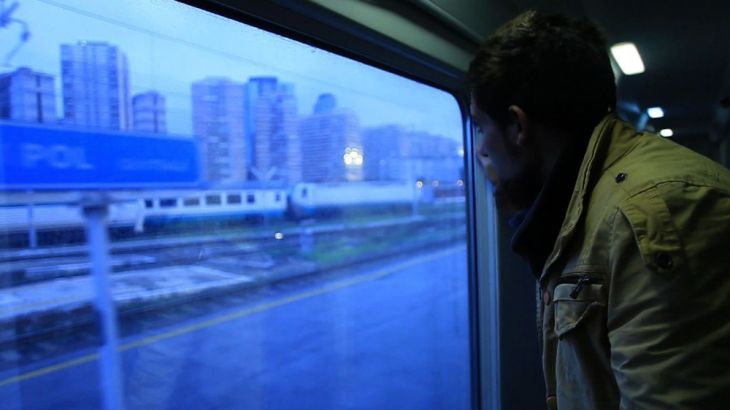
Journey Into the Unknown
We follow two Syrian refugees who part with large sums of money to embark on clandestine journeys fraught with danger.
Filmmaker: Fakher Alayoubi
The refugee crisis triggered by the continuing conflict in Syria has reached epic proportions in 2016. The death toll in the Mediterranean has risen steadily in recent years; and according to a UNHCR report, reached the 10,000 mark in the two-and-a-half years up to June 2016.
Keep reading
list of 4 itemsUN report charts lethal cost of migration over past decade
Conflict, climate, corruption drive Southeast Asia people trafficking: UN
Bodies of three Rohingya found as Indonesia ends rescue for capsized boat
But the numbers succeeding in completing the hazardous sea journey and landing in Italy, largely on the island of Lampedusa, have also continued to increase – and this has challenged Italy’s preparedness to accept, process and accommodate them.
Dublin is like a coastguard that protects the rich European countries.
While the Mediterranean crisis has deepened, the numbers fleeing Syria and taking the land route through Turkey have also mounted.
The powerful images of homeless adults and children queuing and camping at the borders of eastern Europe meant the world could no longer ignore the scale of the refugee crisis.
This human fallout was too much for many of these countries that were simply not prepared – practically or politically – for the nature or numbers of the tens of thousands of displaced people. The way the European Union deals with fingerprinting and asylum applications was also seriously challenged.
This film follows two Syrian refugees trying to reach Europe – one by sea, the other by land.
The filmmakers use hidden cameras to observe people smugglers doing deals with desperate refugees in both Libya and Turkey.
Muhannad Ahmed pays them to travel on an overcrowded boat from Zuwara on the Libyan coast to Italy.
The small fishing vessel has a capacity of 300 passengers – but on this trip 1,068 refugees were on board, including 193 children. No surprise, then, that it leaked and almost sank in the Mediterranean before being rescued by Italian coastguards. Muhannad secretly films the harrowing journey, aware that his phone may be confiscated if he is spotted, meaning clear evidence of the blatant exploitation by the people-smugglers would be lost.
Muhannad manages to travel on through Italy, filming as he goes, and then though France to Germany. Exhausted and running out of money, he abandons his plan to get to Sweden and applies, successfully, for asylum in Germany.
The films also follows Wa’il Azraq who has already tried six times to get to Europe by sea and now tries the overland route via Turkey and Bulgaria. But he is foiled by Bulgarian border police and deported back to Istanbul.
“He [the smuggler] said walk and you’ll arrive in an hour. We walked two hours and crossed the Bulgarian border. Then we waited in the forest. We’d walk a hundred metres out, then go back and wait longer. The first patrol didn’t spot us but the second one did. They took us to the checkpoint and asked where we’d come from and where we were going. They beat a lot of people but they didn’t beat us. They took the phone I’d been filming with and sent us back to Turkey,” Wa’il says.
The filmmakers continue on the route Wa’il would have taken, through Hungary and Austria, stopping at refugee camps and hostels on the way. Refugees in different stages of their journeys to “safety” in Europe tell stories of money stolen, border beatings and forced fingerprinting – a process used under Europe’s Dublin Regulation requiring refugees to be fingerprinted in the first country they arrive in.
The producers also directly confront people smugglers in Turkey accused of defrauding refugees of tens of thousands of euros.
Shot in 2014 but just as resonant today, the film concludes with updates on Wa’il and Muhannad’s journeys. It’s visceral in the way it tells the refugee story from the inside – and hard-hitting on the failure of the international community to deal with both the refugee crisis and its root cause in the continuing conflict in Syria.